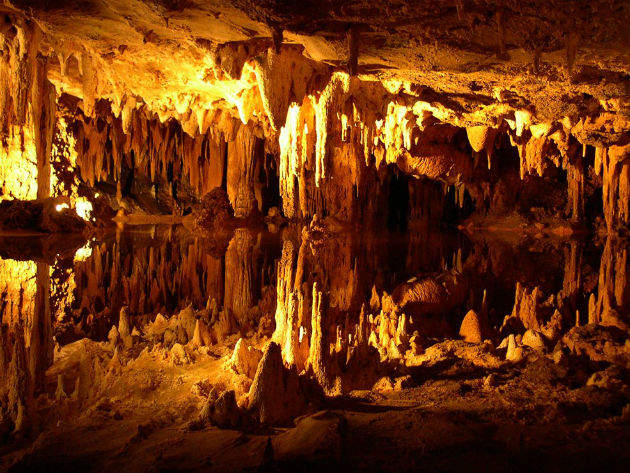
“If we are going to stop using nuclear, coal, gas and oil power plants and replace them with renewables then we will have a system that is very intermittent,” says Atle Harby, senior research scientist at the independent research organisation SINTEF.
For those working in the renewables sector it’s a familiar problem. While few doubt the clear benefits of wind and solar power, without energy storage and grid balancing technologies, it’s not clear how they could satisfy our electricity demands. As Harby says, “solar panels don’t work when there is no sun and wind turbines don’t rotate when there is no wind”.
As things stand, the most established form of energy storage is pumped hydroelectric, where water is pumped up a mountain and then released through turbines to create electricity. But the system still has its drawbacks, according to Harby.
“To have hydropower you need to have mountains, a height difference, and you need to have some water,” he says. “If you live in a dry country or in a flat, low-land country hydropower is not an option.”
Compressed air makes a comeback
One of the most promising alternative systems currently being looked at is compressed air energy storage (CAES). This involves converting excess or off-peak power into compressed air, which is then stored in underground caverns and released through a gas turbine when needed. However, as Harby points out, CAES is not a new idea.
“There are two commercial power plants doing this that were built in the 1970s: one in the US and one in Germany,” he says. “They both use large salt caverns underground and have compressors to compress air. You store it until there is a lack of energy or high consumption. This happens when conventional plants cannot produce enough or the prices are very high so it is valuable to sell it.”

US Tariffs are shifting - will you react or anticipate?
Don’t let policy changes catch you off guard. Stay proactive with real-time data and expert analysis.
By GlobalDataBut there are various problems with these existing systems. Firstly, they are expensive. “I think they have gone bankrupt or been refinanced and are not been used, because it is just too costly compared to other options,” says Harby, “Sometimes you can gain money if you buy electricity when the prices are low and sell it back when the prices are higher. But you have to account for the efficiency loses.”
The main reason the plants are inefficient, Harby adds, is because they lack a way of storing the heat produced when air is compressed. “This is one of the big new challenges of the old systems,” he explains, “When you compress the air you also generate a lot of heat and if you cannot take care of that heat, if you just pump it down into the salt cavern, it will warm up the cavern, and then gradually the heat will decrease.”
Improving efficiency
RICAS 2020, a new project which involves SINTEF working alongside various EU scientists, is aiming to solve this problem. The team hopes to introduce a separate cavern filled with crushed rock that hot air will pass through on its way down into the underground cavern. The rock is heated by the hot air, which it then retains, while the cold air is stored in the main cavern.
“When the air subsequently returns through the crushed rock on its way to be used to generate electricity, the flow of air is reheated by the stones,” says Giovanni Perillo, project manager for SINTEF’s contribution to RICAS 2020. “Hot air is then expanded through the turbine generating electricity,” he adds.
Perillo believes this technology could improve the efficiency of compressed air storage systems by as much as 70%-80%. “The corresponding figures for most of the existing storage sites are no better than 45%-55%, which means that the produced energy is only half of what was initially used to compress the air into the cavern,” he says.
Other companies are also trying to improve compressed air energy storage systems. Canadian company Hydrostor, for example, recently designed a system that extracts heat from air and stores it in a purpose-built thermal management system. When energy is required, hydrostatic pressure forces the air to the surface, which then drives a turbine generating electricity.
British company Gravitricity is also proposing to compress air by creating shafts through which weights can be lowered. “We have a vertical shaft which has a weight moving up and down it,” says Charlie Blair, managing director of Gravitricity. “We can use that shaft as the pressure vessel for the compressed air energy storage.”
Among other benefits, Blair says this could create a rapid response power source. “CAES uses huge underground salt caverns to store that energy,” he says, adding, “What it does is store a lot of energy over a long period of time, but it doesn’t react fast enough. Our system – our gravity system – reacts very fast.”
The future of energy storage
As well as CAES, other energy storage systems and technologies are currently being considered. Harby says, “There are people working on liquid air, for example. This involves cooling air down so it floats which requires less space. There are other ideas too. You can convert things to hydrogen or to chemicals, heat them and then use it back it again.”
For Harby, these new technologies and ideas are a welcome addition to an often neglected area. “We are not thinking enough about energy storage,” he says, “If we are actually going to replace all of these power plants it will require a total change in our energy system.”



